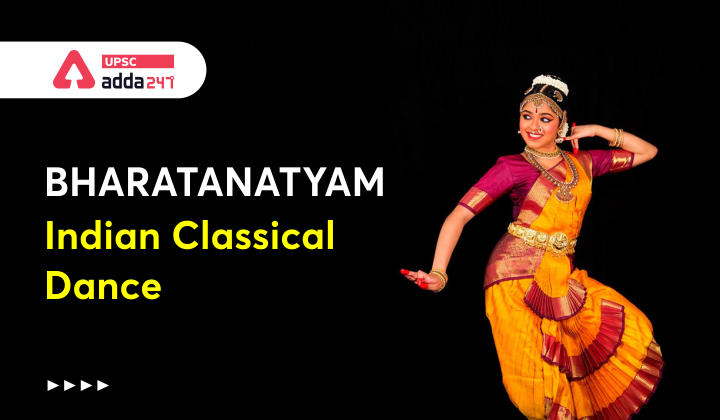Table of Contents
Bharatanatyam- Indian Classical Dance: Bharatanatyam is a revered Indian classical dance form originating from Tamil Nadu. Known for its intricate footwork, graceful movements, and expressive gestures, it combines rhythmic patterns and storytelling elements. Through rigorous training, dancers master the art of Nritta (pure dance) and Abhinaya (expressional dance) to convey emotions and narratives. Accompanied by live music, Bharatanatyam showcases the rich cultural heritage and artistic finesse of India.
Indian Classical Dance
Indian classical dance is a rich and vibrant art form that has deep roots in the cultural heritage of India. It encompasses a diverse range of dance styles, each with its unique characteristics and traditions. Indian classical dance is a blend of intricate footwork, graceful movements, expressive gestures, and emotive storytelling. The dance forms, such as Bharatanatyam, Kathak, Odissi, Manipuri, and Kathakali, are deeply rooted in mythology, religion, and folklore.
They showcase the beauty of the human body and convey profound emotions and narratives through the language of dance. With their elaborate costumes, mesmerizing music, and skilled performers, Indian classical dances captivate audiences with their timeless charm and artistic excellence. These dances are not only a means of entertainment but also a way to preserve and celebrate India’s rich cultural heritage.
Bharatanatyam Classical Dance- Relevance for UPSC Exam
- GS Paper 1: Indian History- Indian culture will cover the salient aspects of Art Forms, Literature, and Architecture from ancient to modern times.
Bharatanatyam Classical Dance
- There are eight forms of dance that are recognized as classical dance by Sangeet Natak Academy. Bharatanatyam Classical Dance is one of them.
- Sangeet Natak Academy is a National Level Academy for Performing Arts set up by the Government of India.
Golden Peacock Environment Management Award 2021
Bharatanatyam Classical Dance- Origin
- About: Bharatanatyam is one of the oldest (around 2000 years old) forms of classical dance which originated in the temples of South India, particularly, Tamil Nadu.
- Role of Devadasi: Devadasi Tradition in south Indian temples kept the Bharatanatyam dance alive for centuries hence, also known as
- Devadasis were young girls ‘gifted’ by their parents to the temples and who were married to the gods.
- The devadasis performed music and dance as offerings to the deities, in the temple courtyards.
- Associated Literature: The origin of the Bharatanatyam dance can be traced to the sage Bharata Muni’s Natyashastra.
- Abhinaya Darpana: It was written by Nandikesvara around the 4th – 5th century BCE. Abhinaya Darpana is the main source that helps in the study of the technique and grammar of body movement in Bharatnatyam Dance.
- Sangam works like Silappatikaram and Manimekalai also contain traces of the Bharatnatyam Dance.
Bharatanatyam Classical Dance- Key Features
- Bharatnatyam dance is composed of three important features- Nritta(pure rhythmic aspect), Natya (play aspects like hand gestures and facial expressions), and Nritya (a blend of rhythmic dance and dramatic expression of emotion).
- Performance: Bharatanatyam Classical Dance was originally performed exclusively by female temple dancers but now both men and women perform Bharatanatyam Dance.
- In Bharatanatyam, rich make-up and bright ornaments are used, which accentuate the facial expressions and gestures of the performers.
- Ekaharya: Bharatanatyam is also known to be Ekaharya, where one dancer takes on many roles in a single performance.
- Hastas or Mudras: They are the Gestures used in Bharatanatyam Dance.
- Karanas: They are the poses that are used in the Bharatanatyam Dance.
- Proponents of the Bharatanatyam dance: Few contemporary Bharatnatyam Artists include- Mrinalini Sarabhai, Shobhana, Yamini Krishnamurthy, Padma Subrahmanyam, etc.
- Use of Classical Carnatic Music: Carnatic music accompanied by instruments such as flute, violin and the Mridangam are used in the Bharatnatyam dance.
Bharatanatyam Classical Dance- Pattern of Bharatanatyam
Bharatanatyam Dance follows the following pattern in a systematic way-
- Alarippu: there is an invocation song. Alarippu (to adorn with flowers) is the first dance item. It is an abstract piece combining pure dance with the recitation of sound syllables.
- Jatiswaram: It is a short pure dance piece performed to the accompaniment of musical notes of any raga of Carnatic music.
- Jatiswaram has no Sahitya or words but is composed of adavus which are pure dance sequences – nritta.
- They form the basis of training in Bharatnatyam dance.
- Abhinaya or mime aspect of dance: the nritya, where the dancer expresses the Sahitya through movement and mime.
- Shabdam: It follows the jatiswaram in a Bharatnatyam dance performance. The accompanying song is generally in adoration of the Supreme Being.
- Varnam: It is the most important component of the Bharatnatyam repertoire, encompasses both nritta and nritya, and epitomizes the essence of this classical dance form.
- The dancer here performs complicated well-graded rhythmic patterns in two speeds showing the control over rhythm and then goes on to depict in a variety of ways, through abhinaya the lines of the Sahitya.
- This portrays the dancer’s excellence in abhinaya and also reflects the endless creativity of the choreographer.
- The varnam is by far one of the most beautiful compositions in Indian dance.
| Follow US | |
| UPSC Govt. Jobs UPSC Current Affairs UPSC Judiciary PCS Download Adda 247 App here to get the latest updates |




 TSPSC Group 1 Question Paper 2024, Downl...
TSPSC Group 1 Question Paper 2024, Downl...
 TSPSC Group 1 Answer key 2024 Out, Downl...
TSPSC Group 1 Answer key 2024 Out, Downl...
 UPSC Prelims 2024 Question Paper, Downlo...
UPSC Prelims 2024 Question Paper, Downlo...




